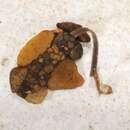en
names in breadcrumbs


Hymenoptera is one of the four large insect orders exceeding 100,000 species in the world, the other major orders being Coleoptera, Lepidoptera and Diptera (Gauld and Bolton 1988, Goulet and Huber 1993). The Hymenoptera order contains about 115,000 described species and authors estimated that there are between 300,000 and 3,000,000 species of Hymenoptera (Gaston 1991), possibly around 1,000,000 (Sharkey 2007). These estimates mean that only 1/10 has been described so far and 9/10 awaits description. However, the number of Hymenoptera species is difficult to estimate with accuracy, as most of the mega diverse regions of the world have not been extensively studied and inventoried regarding this group (LaSalle and Gauld 1993).
Hymenoptera have been traditionally subdivided into three assemblages (the paraphyletic sub-order Symphyta and the monophyletic Aculeata and Parasitica belonging to the sub-order Apocrita). Each group exhibits different biology. ‘Symphyta’ are mostly phytophagous and are the most primitive members of the order. Parasitica are mainly parasitic species but some of them have returned secondarily to phytophagy, while Aculeata encompass a larger spectrum (predators, pollinators, parasitoids); all eusocial hymenoptera belong to this last group.
Members of the Hymenoptera are familiar to a general audience and common names exist for a large variety of groups: “wasps”, “bees”, “ants”, “bumblebees”, “sawflies”, “parasitic wasps”. Hymenoptera adult sizes range from the very small Mymaridae (0.5 mm) to the large aculeate wasps (up to 5 cm long in Europe). This group of mandibulate insects is well defined by the combination of several characters: they have two pairs of functional wings (with the exception of apterous species) bearing fewer veins than most other insect groups and rarely more than seven cross veins. The abdominal tergum 1 is fused to the metanotum and in most Hymenoptera the metasoma (apparent gaster) is joined to the mesosoma (apparent thorax) by a petiole.
Ecologically and economically few groups of insects are as important to mankind as the Hymenoptera. Bees provide the vital ecosystem service of pollination in both natural and managed systems (Gallai et al. 2009) while parasitic Hymenoptera control populations of phytophagous insects (Tscharntke et al. 2007) and can be effective agents for control of pest insects (Bale et al. 2008, Brodeur and Boivin 2004, Jonsson et al. 2008). Some of the phytophagous hymenoptera have an intimate association with their hostplants (Nyman et al. 2006) and can also be considered as major pests to forests (e.g. Diprionidae) (De Somviele et al. 2004, Lyytikainen-Saarenmaa and Tomppo 2002). Ant invasions cause huge economic and ecological costs (Holway 2002, Lach and Thomas 2008) and Hymenoptera stings, specifically those of wasps, hornets and bees cause serious allergic reactions and anaphylaxis (Flabbee et al. 2008, Klotz et al. 2009).
Hymenoptera have two main larval types. ‘Symphyta’ have larvae that are caterpillar-like, but true caterpillars (Lepidoptera) have at most four pairs of prolegs (abdominal segments 3–6) while sawfly larvae have at least five pairs of prolegs (abdominal segments 2–6). Furthermore the prolegs of Symphyta do not bear crochets, whereas those of Lepidoptera larvae do. ‘Apocrita’ have legless grub-like larvae that are nearly featureless unless they have a differentiated head (Goulet and Huber 1993). All Hymenoptera have haplodiploid sex determination (haploid males and diploid females). Arrhenotoky is the most common mode of reproduction in Hymenoptera (Heimpel and de Boer 2008). The males develop parthenogenetically from unfertilised eggs while the females develop from fertilised eggs. Females can control fertilisation by releasing sperm to an egg upon oviposition, and can thus adjust the sex-ratio of their progeny.
Order Hymenoptera is one of the largest insect orders and contains sawflies, bees, wasps, parasitic wasps, and ants.They can be found throughout the world.They have compound eyes, antennae, and usually include three ocelli (simple eyes). Eusociality can be seen in many species, especially bees.The bees have a ‘caste’ system of varying levels, with worker bees that defend and gather food for the colony. Bees help pollinate crops and many other Hymenoptera species feed on insect pests. The eusocial species are sexually dimorphic and exhibit polymorphism. They undergo complete metamorphosis (holometabolism).The grub-like larvae typically feed on leaves.Some species have two pairs of membranous wings and mandibles for chewing.The hind wings have small hooks called hamuli that connect to the front wings.Hymenoptera can be seen in the fossil record as far back as the Triassic.